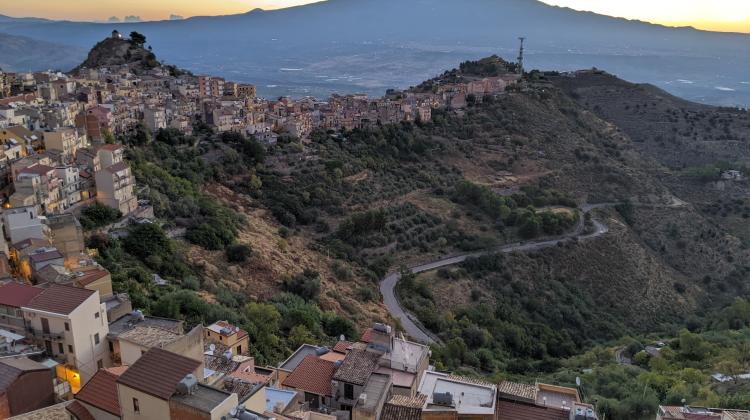The Smart Villages of Italy

Centuripe (Enna, Sicily). Credit: Carmelo Ignaccolo
How can digital technologies be of support to shrinking landscapes in order to advance new development trajectories while also leveraging small towns' heritage and local economies? What transformative actions will be needed at the local level from an urban design standpoint?
These are the questions that center the Fall 2022 practicum, Smart Villages of Italy. The practicum was led by Brent Ryan and Carmelo Ignaccolo and was made possible through a partnership with Politecnico di Milano Architecture, Built Environment and Construction Engineering (ABC) & Telecommunication Engineering Departments, and is funded by MISTI-ITALY and the Progetto Rocca Foundation.
“It is the first time that MIT has organized an urban planning course on the theme of depopulation and widespread historical heritage in Italy,” said Ryan. “Students were exposed to new and unique contexts that bear witness to the cultural richness of Italy's remote areas but also to the fragility of an economically and demographically impoverished territory."
Prior to the beginning of the 2022 fall semester, DUSP students and faculty members conducted ten days of fieldwork activities, traveling to some of the most economically challenged and impoverished areas of Europe in inner Sicily (Favara, Vizzini, and Centuripe), questioning the role of art, public policies, and remote working as tools to promote new forms of development. The class also comparatively scrutinized similar conditions of marginalization in the Alps (Valtellina area, Tirano, and Teglio).
Students are now working on their final projects, focusing on spatial metrics of abandonment in Sicily, a remote-working regional plan for Valtellina, small businesses’ digital outreach and analytics on CDR data, Valtellina’s opportunities from the upcoming winter Olympics, and design guidelines on tourism and food production in Sicily.
"Italy has the third oldest population in the world. As of 2020, 23% of the Italian population was aged 65 years and older, after Japan and Monaco," said Ignaccolo. "Therefore, understanding the spatial implications of demographic decline is of central importance, especially to small towns at risk of extinction. Through this practicum, we are interested in understanding what happens when technology (e.g., optic fiber, high-speed connectivity) meets physical remoteness and abandonment in heritage-rich settlements.”


